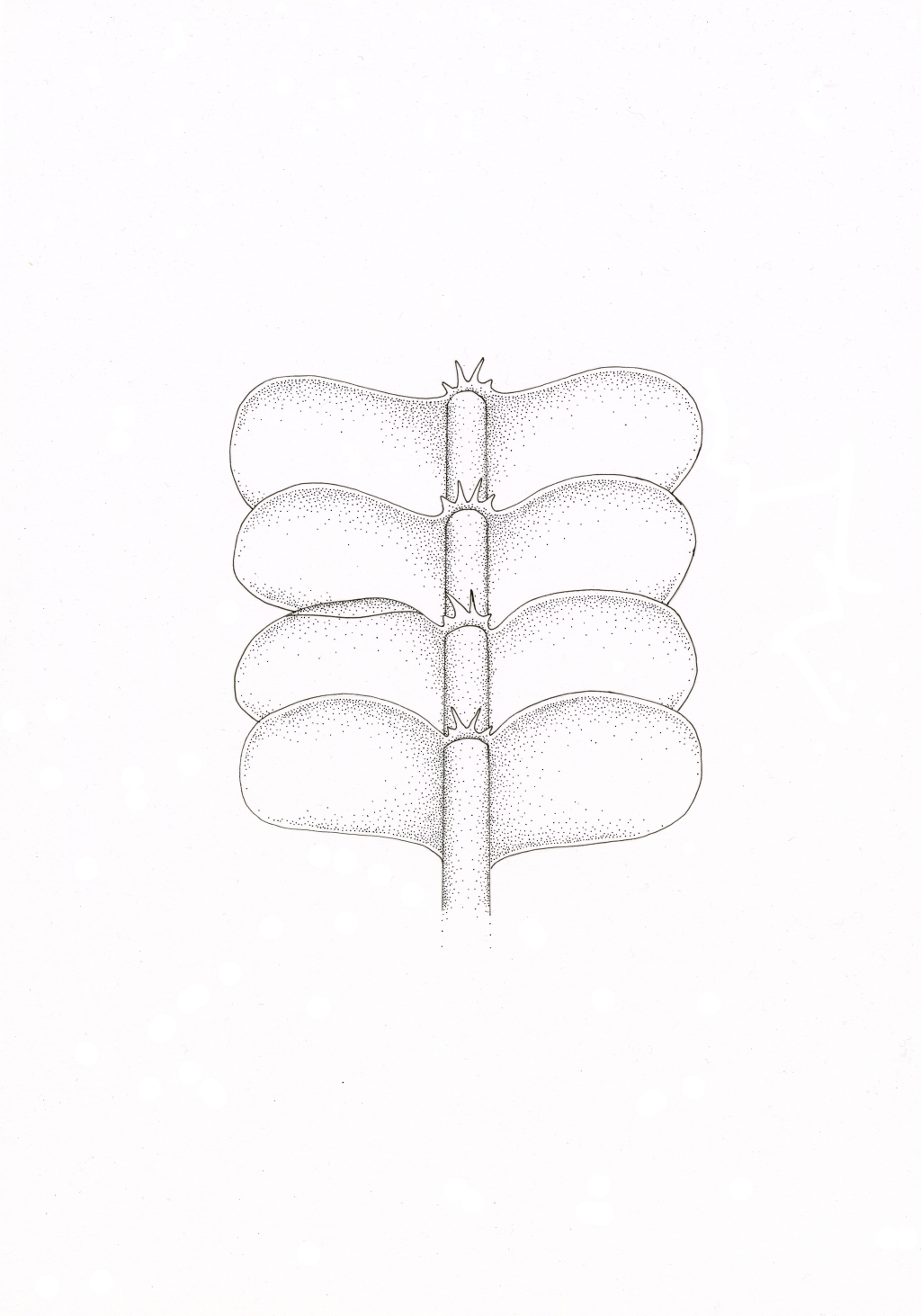Leptoscyphus
Terrestrial, lithophytic or epiphytic, dioicous or rarely monoicous (not in Victoria), usually olive-green to brownish. Asexual reproduction by caducous leaves (not in Victoria). Stems irregularly branched; branches emerging from main stem near and abaxial to a lateral leaf with or without a collar of tissue at its base, or emerging from near underleaves and with a collar of tissue at base (not in Victoria). Lateral leaves obcuneate (not in Victoria), oblong (not in Victoria) or orbicular to ovate, symmetric to asymmetric, entire or with 1–5 teeth along margin (not in Victoria), alternate to opposite, concave or convex adaxially, with succubous insertion, extending to stem midline adaxially or not extending to stem midline adaxially, leaving a leaf-free strip of 1–6 cell rows between it and leaf on opposite side of stem, contiguous (not in Victoria) to imbricate. Underleaves unlobed and lanceolate (not in Victoria) or with two main lobes, with or without (not in Victoria) smaller additional lobes or teeth on either side, smaller than lateral leaves, wider or slightly narrower than stem, narrowly to broadly connate to both nearest lateral leaves, narrowly connate with lateral leaf with acroscopic margin closest to underleaf, free from other lateral leaf, or rarely completely free from lateral leaves (not in Victoria), distant to imbricate, convex or plane when viewed from below; main lobes triangular, entire or dentate. Leaf cells circular, elliptic or polygonal, smooth or papillose (not in Victoria), thin-walled, with distinct trigones, with 2–several ovoid, fusiform, obloid or ellipsoid granular to botryoidal oil bodies. Androecia on main stem or on short branches emerging from main stem near underleaves (not in Victoria). Perianth terminal on main stem or on short branches emerging from stem near lateral leaves, obloid to ellipsoid, inflated basally, laterally compressed toward apex, with two main lobes and a third much narrower sulcate lobe, appearing bilabiate, at apex with entire or toothed margins. Spores papillose.
Around 33 species, mostly from South America and New Zealand, but also in tropical to southern Africa, the Azores and Europe, Central America, the Caribbean and USA, Galapagos and Juan Fernandez Islands, New Guinea and Australia (Engel & Glenny 2019); possibly two species in Victoria.
 Spinning
Spinning